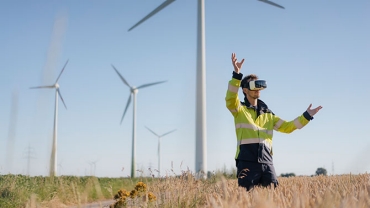
EU Fit for 55 Package: measures to meet 2030 climate target
14/07/21
The EU aims to reduce its net greenhouse gas emissions by at least 55 percent by 2030, compared to 1990 levels, and reach climate neutrality by 2050. On 14 July 2021, the European Commission presented the Fit for 55 Package with proposals to deliver the 2030 CO2 reduction target and pave the way to become the world's first climate-neutral continent by 2050. The Fit for 55 Package is an impressive 12,000 page legislative proposal effectively codifying the principles laid down in the EU Climate Law.
The Fit for 55 Package aims to provide for better alignment between the European environmental tax and regulatory framework and some of the ESG principles. Next to environmental targets, the package also addresses certain societal aspects of the energy transition. For example, a Climate Social Fund is introduced, aiming to mitigate the societal impact of the extended emissions trading scheme. Given the wide range and sheer magnitude of the proposed legislation, it is widely expected to have a significant impact on both the private sector and broader society throughout the EU and beyond.

What does this mean for your company?
This package will have a significant impact on a variety of companies and individuals. As the European Commission states it aims to bring “the transformational change needed across our economy, society and industry”. In particular it will have an impact on companies in Energy, Utilities & Resources (including energy intensive industries), in logistics and transport (including shipping, road transport and aviation), in construction, and companies with real estate and with production sites in the EU that use certain materials from outside the EU.
One of the main actions for most companies will be to assess their supply chain, value chain and the related carbon footprint (direct and indirect) and investigate options available to reduce the footprint. This should mitigate additional taxation that will otherwise follow from the measures included in the Fit for 55 Package. In order to aid the business case for investments to reduce the carbon footprint, there is a wide range of EU and domestic incentives available. Ideally, both the additional tax measures and the available incentives should form an integral part of a sustainable business case.
European Climate Law and the Green Deal
The European Climate Law comes into force on 20 July 2021. In order to reach the set EU climate-neutrality objective for 2050, the European Climate Law provides for a binding EU 2030 climate target of a domestic reduction of net greenhouse gas emissions (emissions after deduction of removals) by at least 55 percent compared to 1990 levels by 2030. With the European Green Deal, the EU implements specific measures to achieve these climate ambitions and aims.
The ‘Fit for 55 package’: 13 Green Deal building blocks
On 14 July 2021, the European Commission adopted and presented the ‘Fit for 55 Package’. A package of comprehensive and interconnected proposals for revision of several regulations and directives as well as certain new legislative proposals.
According to the European Commission, the package combines “application of emissions trading to new sectors and a tightening of the existing EU Emissions Trading System; increased use of renewable energy; greater energy efficiency; a faster roll-out of low emission transport modes and the infrastructure and fuels to support them; an alignment of taxation policies with the European Green Deal objectives; measures to prevent carbon leakage; and tools to preserve and grow our natural carbon sinks.”
EU emission trading scheme (EU ETS)
The European Commission proposes to reduce the overall quantity of emission allowances (the so-called “cap”) and to increase the annual rate of reduction of these emission allowances. For aviation, the European Commission proposes to phase out free emission allowances and to align with the global Carbon Offsetting and Reduction Scheme for International Aviation (CORSIA). Shipping emissions are proposed to be included in the existing EU ETS system for the first time.
Also, a new separate Emissions Trading Scheme is proposed for the Buildings and Road Transport sectors.
Carbon Border Adjustment Mechanism (CBAM)
The CBAM introduces a levy on the importation of certain goods - cement, electricity, fertilisers, iron, steel and aluminium - into the EU from 2023. The aim is to address the risk of carbon leakage and reinforce the EU ETS. The introduction of an EU-wide CBAM should create a common and uniform framework to ensure an equivalence between the carbon pricing policy applied in the EU’s internal market and the carbon pricing policy applied on imports.
Energy Taxation Directive (ETD)
The long awaited revised Energy Taxation Directive aims to ensure that the taxation of energy products and electricity better reflects the impact they have on the environment and on health, by removing disadvantages for clean technologies and introducing higher levels of taxation for inefficient and polluting fuels.
On the PwC-website Managing tax and energy transition - Fit for 55 you will find a more thorough and detailed explanation of these three measures as well as a brief outline of the following other 10 building blocks with green taxes, revisions and measures.
Updates to existing EU laws
- Renewable Energy Directive (RED)
- Effort Sharing Regulation (ESR)
- Energy Efficiency Directive (EED)
- Regulation on the inclusion of greenhouse gas emissions and removals from Land Use, Land Use Change and Forestry (LULUCF)
- Alternative Fuels Infrastructure Regulation (AFID)
- Regulation setting CO2 emission performance standards for new cars and vans
Further new legislative proposals
- ReFuelEU Aviation Initiative
- FuelEU Maritime Initiative
- Climate Social Fund
- EU Forest Strategy
Next steps
Although the European Climate Law comes into force 20 July 2021, the different legislative proposals forming part of the Fit for 55 package each have different timelines. Also, the proposals will first need to be adopted by the European Parliament. However, it is widely expected that a large part of the Fit for 55 Package will be enacted by 1 January 2023. This means that there is little time left to adapt business processes to avoid the expected increased carbon cost.
Contact us

Energy - Utilities - Resources Industry, Tax, Partner, PwC Netherlands
Tel: +31 (0)65 154 18 97

Partner, Energy transition and sustainable energy, PwC Netherlands
Tel: +31 (0)65 160 08 61

Juliette Marsé
Director (Tax) - Energy, Utilities & Resources, PwC Netherlands
Tel: +31 (0)63 419 61 08

Mohammed Azouagh
Senior Manager - Tax, Sustainability and Incentives, PwC Netherlands
Tel: +31 (0)62 380 36 54





















